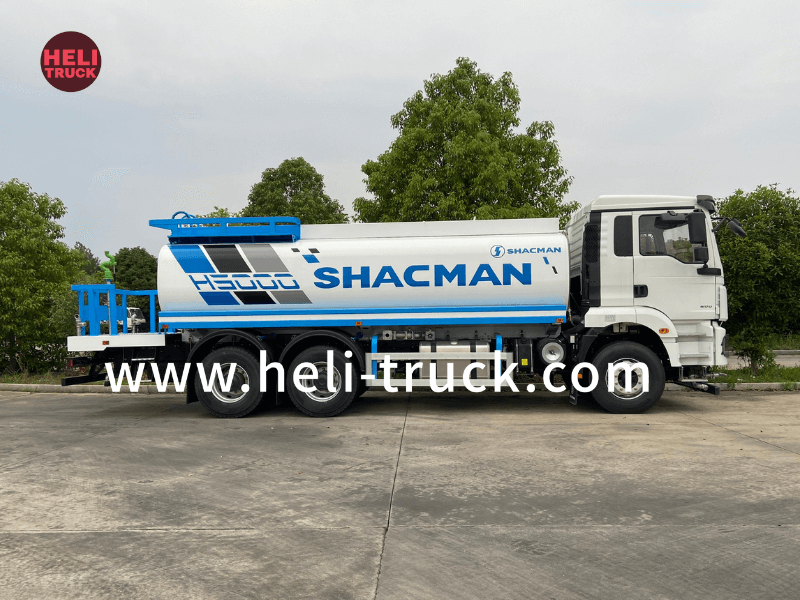Introduction
Garbage compactor trucks play a crucial role in waste management systems by collecting and compacting solid waste for disposal. One of the key factors that determine the effectiveness of these trucks is their capacity. The capacity of a garbage compactor truck refers to the amount of waste it can hold and compact in a single trip. In this article, we will delve into the various aspects of garbage compactor truck capacity, including its importance, types of capacities available, factors influencing capacity, and ways to maximize efficiency.
Importance of Garbage Compactor Truck Capacity
The capacity of a garbage compactor truck is a critical factor that directly impacts the efficiency and effectiveness of waste collection and disposal operations. water tank truck with a larger capacity can collect more waste in a single trip, reducing the frequency of trips required to empty the truck. This not only saves time and resources but also minimizes the environmental impact of waste collection activities, such as fuel consumption and greenhouse gas emissions.
Moreover, a garbage compactor truck with a higher capacity can help to optimize route planning and collection schedules. By maximizing the amount of waste collected in each trip, municipalities and waste management companies can ensure more efficient use of resources and manpower, leading to cost savings and improved service delivery.
Types of Garbage Compactor Truck Capacities
Garbage compactor trucks are available in a variety of capacities to suit different operational needs and waste volumes. The most common types of capacities include:
1. Small Capacity: Small garbage compactor trucks typically have a capacity ranging from 3 to 6 cubic yards. These trucks are ideal for residential areas, small businesses, and locations with low waste generation. They are compact in size and can navigate narrow streets and alleys with ease.
2. Medium Capacity: Medium-sized garbage compactor trucks generally have a capacity of 7 to 15 cubic yards. These trucks are suitable for medium-sized businesses, commercial establishments, and urban areas with moderate waste volumes. They offer a balance between capacity and maneuverability, making them versatile for various collection tasks.
3. Large Capacity: Large garbage compactor trucks are designed to handle high volumes of waste efficiently. With capacities ranging from 16 to 30 cubic yards or more, these trucks are commonly used for commercial waste collection, industrial sites, and densely populated urban areas. They are equipped with powerful compaction systems to maximize waste storage and minimize the frequency of trips.
Factors Influencing Garbage Compactor Truck Capacity
Several factors influence the capacity of a garbage compactor truck and determine the optimal size for a specific application. Some of the key factors to consider include:
1. Waste Generation Rate: The amount of waste generated in a particular area or facility is a crucial factor in determining the appropriate truck capacity. Understanding the daily or weekly waste generation rate helps in selecting a truck that can accommodate the volume of waste produced without requiring frequent emptying.

2. Collection Frequency: The frequency of waste collection plays a significant role in determining the required capacity of a garbage compactor truck. Areas with infrequent collection schedules may necessitate larger trucks to handle accumulated waste over longer periods, while areas with daily collections can utilize smaller trucks more effectively.
3. Operational Efficiency: The efficiency of waste collection operations, including route planning, staffing, and equipment utilization, influences the choice of truck capacity. A well-organized collection system can maximize the use of available resources and optimize truck capacity to achieve cost-effective and sustainable waste management practices.
4. Spatial Constraints: The physical environment and layout of the collection area, such as narrow streets, tight turns, or limited maneuvering space, can impact the choice of garbage compactor truck capacity. Trucks must be able to navigate the collection routes effectively while accommodating the required waste volume.
Maximizing Efficiency of Garbage Compactor Truck Capacity
To maximize the efficiency of garbage compactor truck capacity and enhance waste management practices, several strategies can be implemented:
1. Optimal Route Planning: Efficient route planning plays a crucial role in maximizing truck capacity utilization. By identifying the most efficient collection routes, minimizing travel distances, and optimizing stop locations, waste management companies can reduce fuel consumption, vehicle wear and tear, and overall operational costs.
2. Regular Maintenance and Inspection: Proper maintenance and regular inspection of garbage compactor trucks are essential to ensure optimal performance and longevity. Checking compaction systems, hydraulic components, and other critical parts can prevent breakdowns, prolong the lifespan of the truck, and maintain its capacity efficiency.
3. Training and Skill Development: Providing training to drivers and operators on proper truck operation, waste handling techniques, and safety protocols can enhance operational efficiency and maximize truck capacity utilization. Well-trained personnel can operate the truck effectively, prevent accidents, and optimize waste collection processes.
4. Monitoring and Reporting: Implementing a monitoring and reporting system to track truck performance, waste collection metrics, and capacity utilization can provide valuable insights for improving operational efficiency. Analyzing data on waste volumes, collection frequencies, and route efficiencies can help identify areas for optimization and resource allocation.
Conclusion
Garbage compactor truck capacity is a critical factor in waste management operations that directly impacts efficiency, cost-effectiveness, and environmental sustainability. By understanding the importance of truck capacity, choosing the right size based on operational needs, and implementing strategies to maximize efficiency, municipalities and waste management companies can enhance their waste collection and disposal practices.
Whether it is a small, medium, or large garbage compactor truck, selecting the appropriate capacity and optimizing its utilization through effective planning, maintenance, training, and monitoring can lead to improved service delivery, reduced operational costs, and a cleaner, healthier environment for communities. By prioritizing efficiency and sustainability in waste management practices, stakeholders can contribute to a more sustainable future for generations to come.
